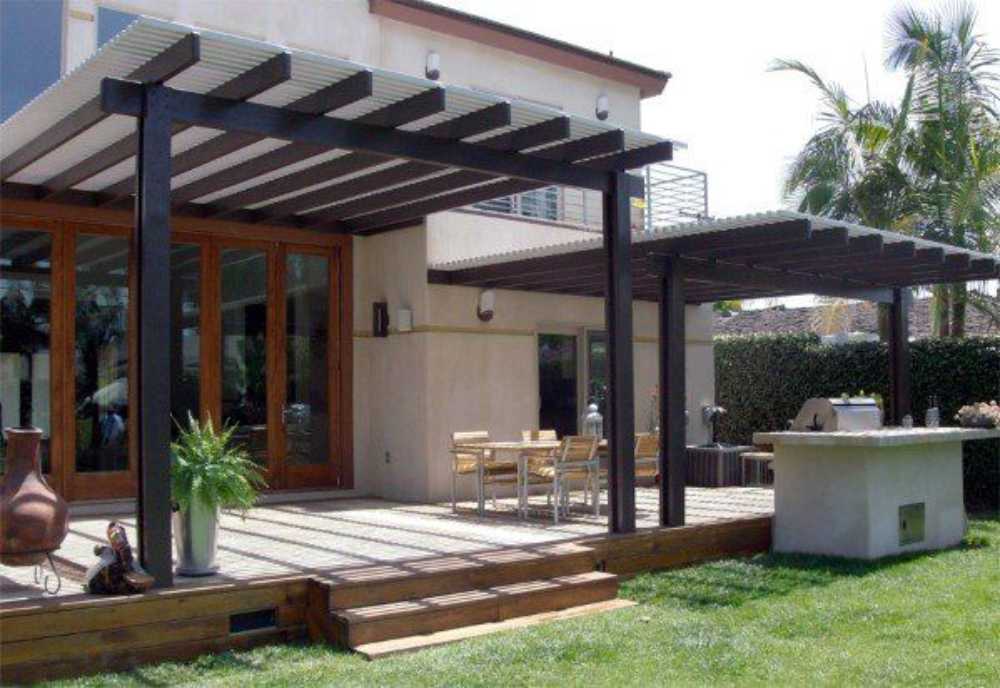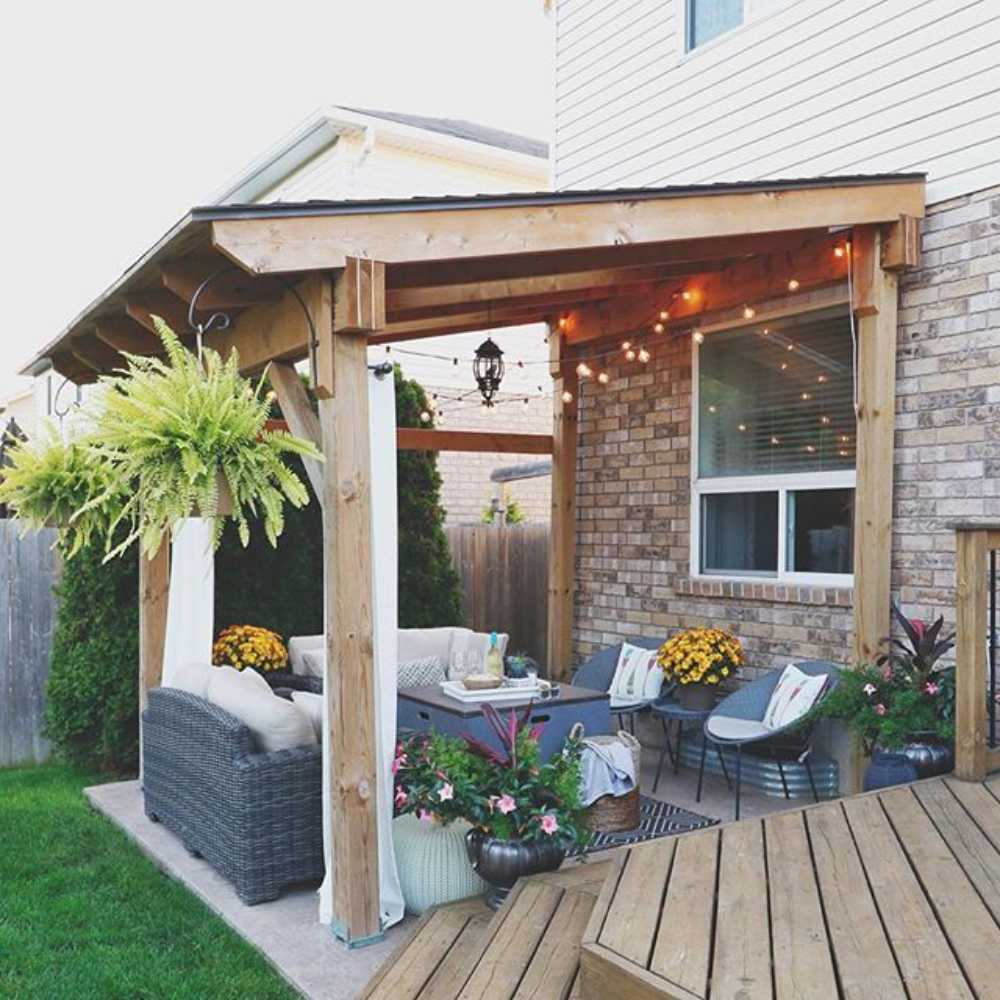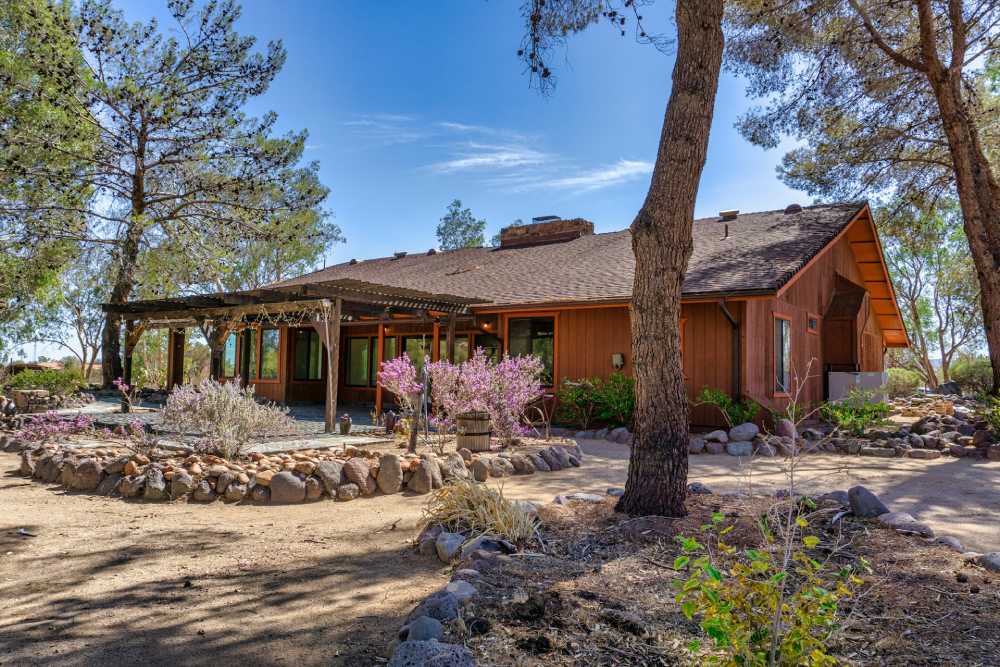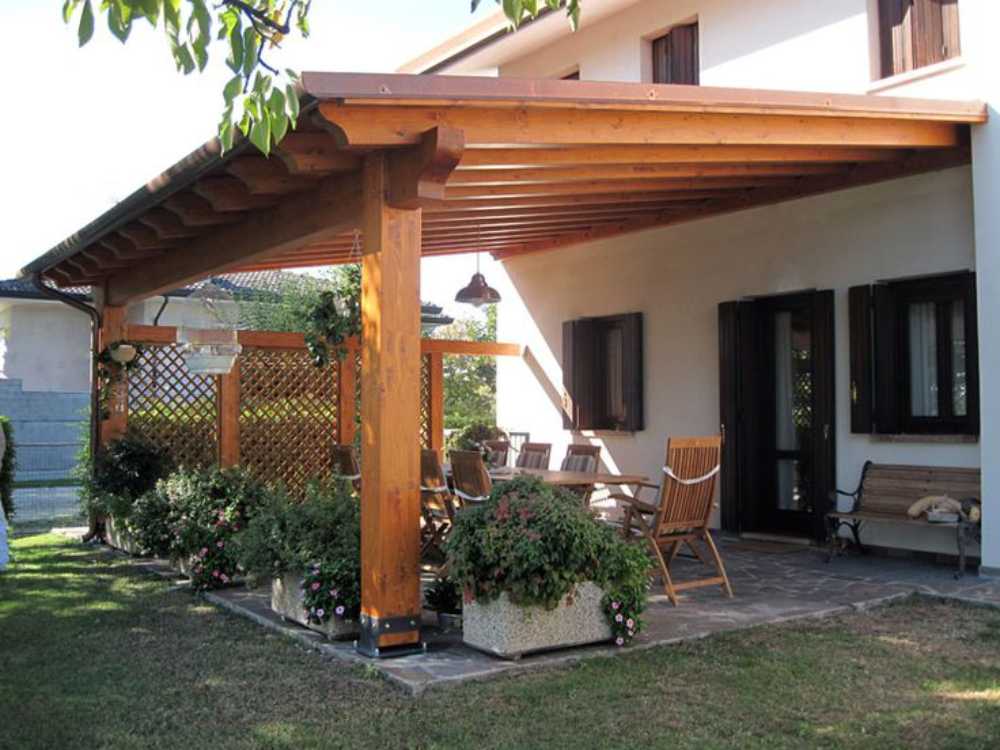Simply adding roofs to covered patios revolutionize ordinary backyards into impressive outdoor living spaces. Simple designs to complex structures range from $10,000 to $50,000. Smart patio solutions can add up to 384 square feet of usable space to your home.
The perfect outdoor retreat needs you to think over several patio roof designs. These range from classic wooden structures to modern metal installations. Homeowners’ priorities vary between weather protection and outdoor kitchen spaces, but the options are extensive. Multiple styles like gable roof, hip roof, flat roof, and pergola designs are available. Each design offers unique advantages that match different lifestyle needs.
Planning Your Covered Patio Roof Project
A well-planned patio roof project needs a full picture of what’s involved. Before you reshape your outdoor living space, you should think about three vital areas.
Assessing your space and needs
Getting the right patio roof design starts with a good review of your available space. Your patio cover needs to be a single-story structure that’s no taller than 12 feet. The ceiling height must be at least 7 feet so people can move around comfortably.
Here’s everything you need to think about when planning:
- How much space you have to build
- The size you want (height and width)
- What you’ll use it for (fun activities, eating outside, or just relaxing)
- How it fits with your current garden
- The amount of sunlight you want
Research local building codes
Building codes are vital to making your covered patio ideas work. Your patio cover usually needs to be at least 5 feet away from property lines. The structure also needs to hold up at least 10 pounds of weight per square foot.

Setting a realistic timeline
Bigger patio roof installations typically take 2-3 months to finish. You’ll need to plan each phase carefully to stay on track.
| Project Phase | Estimated Duration |
|---|---|
| Original Planning | 2-3 weeks |
| Permit Approval | 3-4 weeks |
| Material Procurement | 2-3 weeks |
| Construction | 1-2 weeks |
The weather, permit processing, and getting materials can substantially affect your timeline. You should factor in extra time for HOA approvals and building permits. It’s best to start planning months before you want to host any outdoor events.
Local contractors who know the area’s building rules can help guide you through backyard patio roof ideas. These experts can direct you through complex building codes and make sure your project meets all structural requirements and safety standards.
Choosing the Right Materials for Your Budget
Choosing materials for a patio roof requires you to balance cost, durability, and looks. Homeowners can pick from options that match different budgets and style priorities.
Economical options compared
Patio roof material costs vary, with vinyl being one of the most affordable at $5-$13 per square foot. People looking for modern patio roof ideas might prefer aluminum as a mid-range option at $20-$70 per square foot. Glass is a pricier choice that ranges from $25-$45 per square foot.
Here’s a comparison of popular materials:
| Material | Cost Range (per sq ft) | Best For |
|---|---|---|
| Vinyl | $5-$13 | Budget-conscious projects |
| Wood | $15-$35 | Traditional esthetics |
| Fiberglass | $16-$39 | Heat resistance |
| Aluminum | $20-$70 | Modern designs |
Long-term maintenance to think about.
Your outdoor patio roof’s lifespan depends on proper maintenance. Aluminum patio covers need minimal upkeep – just clean them with mild detergent occasionally. Wooden structures need more attention and require sealing or staining every few years.
Important maintenance factors to remember:
- Regular cleaning schedule based on material type
- Seasonal inspection requirements
- Protection against environmental factors
- Repair and replacement costs over time
Materials you can install yourself
People interested in budget-friendly patio roof ideas should know some materials work better for DIY installation. Vinyl is a great choice that’s both affordable and easy to install. Polycarbonate roofing is another DIY-friendly option that’s leak-proof and usually comes with a manufacturer’s lifetime warranty.
DIY patio roof projects work best with materials that are:
- Light and easy to handle
- Pre-cut or simple to customize
- Work with basic tools
- Come with clear installation guides
Polycarbonate and vinyl materials give you great value for backyard patio roofs. These materials protect well and need little maintenance. Remember to check your local climate conditions and building codes before making your final choice.
Implementing Outdoor Patio Roof Ideas
Building an outdoor patio roof needs careful attention to detail and proper execution to create a successful project. Homeowners should start with a well-laid-out approach that will give a safe and functional result.
Step-by-step installation process
The installation process starts with site preparation and moves through a systematic sequence:
- Planning and design finalization
- Getting necessary permits
- Site preparation and safety setup
- Foundation laying
- Frame construction
- Roof installation
- Adding finishing touches
- Final inspection
Project complexity determines the construction timeline, though most installations take 2-3 weeks to complete.
Working with contractors
Qualified contractors play a vital role in building covered patio roofs. Professional contractors must meet these significant requirements:
| Requirement | Details |
|---|---|
| Insurance | Minimum $1 million liability coverage |
| Licensing | All required state and local permits |
| Experience | Proven track record with similar projects |
| Communication | Clear project timeline and cost breakdown |
Homeowners must get written estimates with complete descriptions of the work. This documentation prevents misunderstandings and creates project transparency.
Common installation challenges
Several challenges can emerge when building backyard patio roofs. Homeowners should prepare for:
- Structural issues: Sagging can occur due to accumulated debris or aging materials
- Water-related problems: Leaks often develop from gaps or cracks in roofing material
- Support concerns: Additional beams or braces might be needed for proper stability
Regular maintenance prevents these issues effectively. Early problem identification comes from consistent inspections, which allows timely repairs and adjustments. Weekly vent checks help prevent clogging that could affect the roof’s moisture handling.
When these issues come up, it’s best to call Top Glaze Roofing experts to fix leaks, repair sagging, and restore patio roofs.
Modern patio roof construction works like other home improvements. Weather conditions and proper scheduling matter greatly. Smart homeowners plan installations during good weather to avoid delays and complications.
Cheap Patio Roof Ideas That Look Expensive
You can create an elegant patio roof without spending too much money. Smart material choices and thoughtful design decisions help homeowners achieve stunning results that combine style with affordability.

Budget-friendly material alternatives
Several affordable materials offer both durability and visual appeal. Vinyl makes an economical choice, with costs ranging from $5-$13 per square foot. Polycarbonate is another attractive option that’s durable and easy to install while staying within budget.
| Material Type | Benefits | Maintenance Needs |
|---|---|---|
| Vinyl | Weather resistant, natural look | Low upkeep |
| Polycarbonate | Lightweight, durable | Minimal cleaning |
| Woven Bamboo | Quick installation, unique esthetic | Seasonal weatherproofing |
Creative design shortcuts
Simple yet effective design elements can improve your outdoor patio roof ideas. String fairy lights around the patio’s perimeter create a magical atmosphere without costing much. Outdoor curtains add a resort-like feel and provide extra shade and privacy.
Design elements that make the biggest impact:
- Strategic placement of potted plants adds natural beauty
- DIY wall art brings personal touches
- Weather-resistant fabric canopies add texture
Cost-saving installation tips
Smart planning and execution help implement cheap patio roof ideas. Buying materials during off-season sales cuts down expenses. Using existing structures or trees can reduce overall costs by a lot.
Building the patio cover in stages lets you manage your budget better over time. A covered space using corrugated plastic panels costs less than $200. Carport covers are an unexpected yet effective way to cover concrete patios.
Modern patio roof ideas that fit your budget include fabric shade solutions that add versatility and style. These options protect against UV rays while adding visual interest through colors and patterns. Mixing affordable materials like bamboo with waterproof canopies creates a unique outdoor living space that looks more expensive than it really is.
Patio Roof Ideas Attached to House
Adding a patio roof to your house needs careful planning and proper installation methods. You must think about several significant factors to build a safe and lasting patio roof that attaches well to your home.
Structural considerations
The attachment point selection depends on your house’s construction. A patio cover works best as a single-story structure that stays under 12 feet in height. Your structure needs proper support through either:
| Attachment Method | Best Used For |
|---|---|
| Ledger Board | Standard wall attachment |
| Roof Extension | Additional height needs |
| Band Joist | Two-story homes |
Your patio cover should support a minimum vertical live load of 10 pounds per square foot. This is a big deal as it means that proper anchoring and support systems will keep it stable over time.
Waterproofing and drainage
Good waterproofing prevents moisture damage. EPDM membrane techniques are a great way to get waterproof patio roofs because manufacturers can make them to exact specifications.

Your drainage system should include:
- Good gutters and downspouts
- A slight slope (typically 1/4 inch per foot) away from the house
- Regular checks of drainage systems, especially after heavy rain
Seamless integration techniques
Beyond technical specs(see our roof pitch chart), your patio roof should look great with your existing structure. A well-laid-out patio cover matches your property’s style and meets local building codes.
You should focus on:
- Matching Materials: Pick roofing materials and colors that go with your house
- Proper Flashing: Use galvanized metal Z-flashing under siding to stop water seepage
- Structural Connection: Attach the ledger board to wall studs or floor joists correctly
Louvered roof systems offer a modern solution for smooth integration. These adjustable systems let you control sunlight and airflow while keeping your home’s look consistent.
Your patio roof’s success depends on good installation. Contractors usually attach the structure to your home’s exterior wall or roof overhang. The core team often opens up the existing roof to secure rafters and create weatherproof connections.
With good planning and the right execution, your new patio roof will protect you from weather and boost your property’s value and looks.
Patio Roof Ideas Frequently Asked Questions
What is the best roof for an outdoor patio?
The best roof for an outdoor patio depends on your climate, budget, and aesthetic preferences. A metal roof is durable and provides excellent protection from the elements, while a polycarbonate roof allows natural light to pass through while still offering protection. If you’re looking for stylish outdoor patio roof ideas, a pergola with a retractable canopy can offer flexibility in shade and openness.
What is the cheapest way to cover a patio?
The cheapest way to cover a patio is by using shade sails, fabric canopies, or corrugated plastic panels. Shade sails are an affordable and easy-to-install option that provides sun protection while allowing air to circulate. If you are considering cheap patio roof ideas, using reclaimed materials like old metal roofing or wooden beams can further reduce costs while adding a rustic touch.
How much does a 20×20 patio cover cost?
The cost of a 20×20 patio cover varies depending on materials and labor. A basic aluminum or polycarbonate cover can cost around $2,000 to $6,000, while a wooden pergola or shingled roof can range from $5,000 to $15,000. If you’re exploring extension patio roof ideas, additional factors such as permits and custom designs may increase the overall cost.
What is the cheapest material for a patio roof?
The cheapest material for a patio roof is corrugated plastic or metal sheets. Corrugated plastic is lightweight, easy to install, and provides decent weather resistance at a lower cost than traditional roofing materials. If you’re looking for budget-friendly outdoor patio roof ideas, a tarp or shade cloth stretched over a frame can provide a temporary, cost-effective solution.
How much does it cost to put a roof over a patio?
The cost to put a roof over a patio depends on the size, materials, and labor involved. On average, installing a basic patio cover ranges from $1,500 to $10,000. If you want patio roof ideas attached to house structures, a more permanent roof, such as an extension of your existing home’s roofline, could cost $10,000 to $30,000.
Can you walk on patio roof?
Whether you can walk on a patio roof depends on its material and structural support. Metal and wooden roofs designed for load-bearing can support some weight, but lightweight options like polycarbonate or fabric covers cannot. If you’re considering patio roof ideas, it’s essential to check weight limits and reinforcement before attempting to walk on any patio roof.
What do you call a roof over a patio?
A roof over a patio is commonly called a patio cover, pergola, or awning, depending on its design. A solid roof structure attached to the house is often referred to as a porch roof or an extended patio roof. If you’re searching for outdoor patio roof ideas, options like gazebos or pavilions also provide covered outdoor spaces.
What is the best material for a covered patio?
The best material for a covered patio depends on durability, cost, and aesthetics. Metal and polycarbonate are excellent for long-term durability and weather resistance, while wood offers a natural and classic look. When exploring patio roof ideas attached to house structures, asphalt shingles or clay tiles that match your home’s roof can create a seamless design.
How much slope does a patio roof need?
A patio roof needs a minimum slope of about 1/4 inch per foot for proper water drainage. A steeper slope may be necessary in areas with heavy rainfall or snow accumulation. If you’re considering extension patio roof ideas, ensuring the right slope will prevent water pooling and structural damage over time.
How do you waterproof a patio roof?
To waterproof a patio roof, you can use sealants, waterproof membranes, or corrugated roofing panels. Applying a high-quality sealant or installing flashing along seams and joints can prevent leaks. If you are searching for effective outdoor patio roof ideas, using metal or polycarbonate panels with built-in drainage channels can also help keep your space dry.
How much weight can a patio roof hold?
The weight a patio roof can hold depends on its construction and materials. A well-built wooden patio roof can typically support 10-20 pounds per square foot, while metal or polycarbonate covers have lower load-bearing capacities. If you’re looking into extension patio roof ideas, reinforcing beams and trusses can help increase weight capacity.
What thickness of plywood for a patio roof?
For a patio roof, the recommended plywood thickness is typically 1/2 inch to 3/4 inch, depending on the span and expected load. Thicker plywood provides more strength and stability, especially if shingles or tiles are added. If you are considering patio roof ideas attached to house designs, matching the thickness to your existing roof can enhance durability and longevity.
